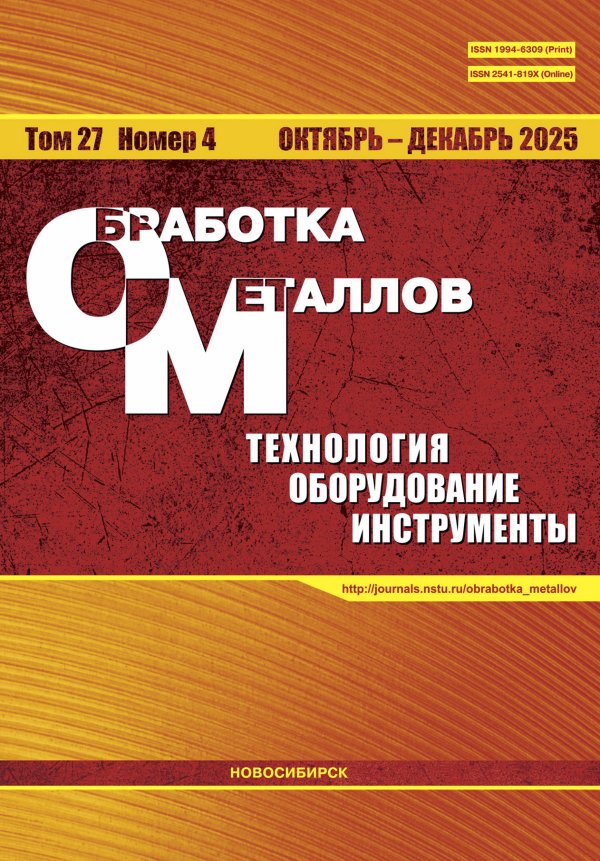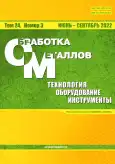Теоретический анализ способов пассивного шлифования рельсов
- Авторы: Ильиных А.С.1, Банул В.В.1, Воронцов Д.С.1
-
Учреждения:
- Выпуск: Том 24, № 3 (2022)
- Страницы: 22-39
- Раздел: ТЕХНОЛОГИЯ
- URL: https://ogarev-online.ru/1994-6309/article/view/301860
- DOI: https://doi.org/10.17212/1994-6309-2022-24.3-22-39
- ID: 301860
Цитировать
Аннотация
Об авторах
А. С. Ильиных
Email: asi@stu.ru
доктор техн. наук, Доцент, Сибирский государственный университет путей сообщения, ул. Дуси Ковальчук, 191, 630049, Россия, asi@stu.ru
В. В. Банул
Email: banul@ngs.ru
канд. техн. наук, Сибирский государственный университет путей сообщения, ул. Дуси Ковальчук, 191, 630049, Россия, banul@ngs.ru
Д. С. Воронцов
Email: voroncovds@stu.ru
канд. техн. наук, Доцент, Сибирский государственный университет путей сообщения, ул. Дуси Ковальчук, 191, 630049, Россия, voroncovds@stu.ru
Список литературы
- Rail surface quality analysis according to rail grinding on operational railway track / W. Jeong, J. Hong, H. Kho, H. Lee // Journal of the Korean Society for Railway. – 2021. – Vol. 24, iss. 10. – P. 852–860. – doi: 10.7782/JKSR.2021.24.10.852.
- Lundmark J. Rail grinding and its impact on the wear of wheels and rails // Licentiate Thesis. – 2007. – URL: https://www.diva-portal.org/smash/get/diva2:990239/FULLTEXT01.pdf (accessed: 03.08.2022).
- Jeong W., Shin J. Grinding effect analysis according to control variables of compact rail surface grinding machine // Journal of the Korean Society for Railway. – 2020. – Vol. 23, iss. 7. – P. 688–695. – doi: 10.7782/JKSR.2020.23.7.688.
- Обобщение передового опыта тяжеловесного движения: вопросы взаимодействия колеса и рельса / У.Дж. Харрис, С.М. Захаров, Дж. Ландгрен, Х. Турне, В. Эберсен. – М.: Интекст, 2002. – 408 с. – ISBN 978-5-89277-037-0.
- Ильиных А.С., Бондарев Э.С. Отечественный и зарубежный опыт организации и планирования работ по шлифованию рельсов // Фундаментальные и прикладные вопросы транспорта. – 2021. – № 1 (2). – С. 11–24. – doi: 10.52170/2712-9195/2021_2_11.
- Fan W., Liu Y., Li J. Development status and prospect of rail grinding technology for high speed railway // Journal of Mechanical Engineering. – 2018. – Vol. 54, iss. 22. – P. 184–193. – doi: 10.3901/JME.2018.22.184.
- Design method of rail grinding target profile based on non–uniform rational B-spline / F. Lin, S. Wang, H. Zhang, W. Hu // Proceedings of the Institution of Mechanical Engineers, Part F: Journal of Rail and Rapid Transit. – 2021. – Vol. 235, iss. 8. – P. 946–956. – doi: 10.1177/0954409720972819.
- Influence of rail grinding process parameters on rail surface roughness and surface layer hardness / E. Uhlmann, P. Lypovka, L. Hochschild, N. Schröer // Wear. – 2016. – Vol. 366–367 – P. 287–293. – doi: 10.1016/j.wear.2016.03.023.
- Ilinykh A., Matafonov A., Yurkova E. Efficiency of the production process of grinding rails on the basis of optimizing the periodicity of works // Advances in Intelligent Systems and Computing. – 2019. – Vol. 2. – P. 672–681. – doi: 10.1007/978-3-030-37919-3_67.
- Суслов А.Г., Бишутин С.Г., Захаров Л.А. Инновационные технологии рельсообработки высокоскоростных железных дорог // Наукоемкие технологии в машиностроении. – 2020. – № 8. – С. 11–17. – doi: 10.30987/2223-4608-2020-8-11-17.
- Schoch W. Grinding of rails on high-speed railway lines: a matter of great importance // Rail Engineering International. – 2007. – Vol. 36, iss. 1. – P. 6–8.
- Funke H. Rail grinding. – Berlin: Transpress, 1986. – 153 p.
- Taubert M., Püschel A. Speed grinding rail // International Railway Journal. – 2009. – N 7. – P. 31–33.
- Скоростное шлифование рельсов // Железные дороги мира. – 2010. – № 7. – C. 68–71.
- Высокоскоростное шлифование рельсов // Железные дороги мира. – 2011. – № 8. – C. 62–66.
- Патент № 2759298 Российская Федерация. Способ обработки поверхности головки рельса и устройство для его осуществления: № 2021103701: заявл. 12.02.2021: опубл. 11.11.2021 / А.С. Ильиных, В.В. Банул.
- Особенности формирования технологического процесса плоского шлифования торцом круга при упругой подвеске шлифовальной головки / В.А. Аксенов, А.С. Ильиных, М.С. Галай, А.В. Матафонов // Вестник Пермского национального исследовательского политехнического университета. Машиностроение, материаловедение. – 2016. – Т. 18, № 4. – C. 34–47. – doi: 10.15593/2224-9877/2016.4.03.
- Doman D., Warkentin A., Bauer R. A survey of recent grinding wheel topography models // International Journal of Machine Tools and Manufacture. – 2006. – Vol. 46, iss. 3. – P. 343–352. – doi: 10.1016/j.ijmachtools.2005.05.013.
- Experimental observation of tool wear in rotary ultrasonic machining of advanced ceramics / W. Zenga, Z. Lib, Z. Peib, C. Treadwell // International Journal of Machine Tools and Manufacture. – 2005. – Vol. 45, iss. 12–13. – P. 1468–1473.
- Designed a passive grinding test machine to simulate passive grinding process / P. Liu, W. Zou, J. Peng, X. Song, F. Xiao // Processes. – 2021. – Vol. 9, iss. 8. – P. 1317. – doi: 10.3390/pr9081317.
- Study on the effect of grinding pressure on material removal behavior performed on a self-designed passive grinding simulator / P. Liu, W. Zou, J. Peng, X. Song, F. Xiao // Applied Sciences. – 2021. – Vol. 11, iss. 9. – P. 4128. – doi: 10.3390/app11094128.
Дополнительные файлы







